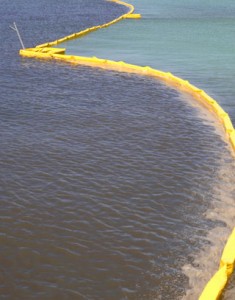By Guest Blogger: Jack Rubinger
From Portland to Pittsburgh, from the Arctic to the Adriatic, industrial chemical spills  are common. Spill response teams need to act fast when these events occur, with the appropriate cleanup and communications supplies on hand.
are common. Spill response teams need to act fast when these events occur, with the appropriate cleanup and communications supplies on hand.
Industry and the public are vitally concerned about spills and their potential economic and environmental impacts. Spills such as Exxon Valdez and the Gulf of Mexico spill incited strong reactions and have dramatically increased efforts by both industry and government to increase protection against spills.
Signs and labels provide safety communications at facilities, in the field and in multiple languages to workers, emergency responders and the public. When created by thermal transfer printers, signs and labels are very durable and adhere to stainless steel, concrete, glass and other surfaces. If an incident takes place after dark, phosphorescent tapes convey critical information.
Bar-coded asset labels make it much easier to identify equipment such as booms and vacuum trucks providing the ability to analyze, identify and return valuable equipment used onsite – a valuable inventory control application. This helps protect contractors while minimizing the risk of mistakes and audits.
Wherever chemicals are present, spills can occur and when they do occur a chemical spill response kit containing the following items can be helpful:
- Disposable gloves
- Safety goggles
- Absorbent (spill pillows, socks, sorbents)
- Bags or bins for containment
- Hazardous waste tags and labels to identify contents for appropriate disposal
Developments in Spill Prevention, Containment and Response Systems. Training in the latest technologies and products is critical so hazmat workers can quickly contain and control spills. Training workers to a response plan can save valuable time when an emergency occurs.
Choosing the right absorbent for the application. Spills should be contained and isolated first to prevent further contamination, and then work can be done to remove the contamination. Isolation can be accomplished with two product types: absorbent and non-absorbent. Absorbent isolation products include oil-only booms, sweeps and socks. Non-absorbent isolation products include berms and containment pools.
A third product type is designed for removing spills. Removal products include pads, rugs and mats, pillows and loose sorbents which are used for oil, hazmat and universal applications. Universal removal products absorb oils, coolants, solvents and water. They are used for tool and chemical cabinets, parts cleaning and machine repairs. Oil-only removal products are used for oil spills on land and water, machine repair and parts cleaning. Hazard removal products absorb acids, bases and unknown liquids. They are used for chemical spills, battery acid leaks and storage cabinet liners.
Diverters and drain guards prevent hazardous chemicals from draining into clean water supplies.
Spill kits have been developed for a wide range of spill volumes. Spill kits consist of items such as pads, socks, pillows, gloves, goggles and tamper-proof seals. Most kits are available in a universal, oil-only and hazmat format.
Visual communication and spill containment are a necessary part of facility and environmental management. Quick action and clear communication are always critical.
For more information, visit www.SpillArrest.com, call 888-326-9244 or email jarubinger@graphicproducts.com.
